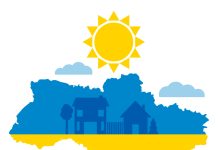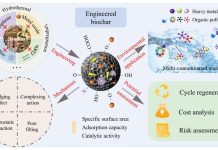Cities across Europe are improving how they perceive and integrate nature within their urban environments through the Urban Nature Plan
Moving away from viewing nature as decoration, municipalities are increasingly recognising its potential as infrastructure. A big part of this shift are Urban Nature Plans (UNPs)—strategic frameworks designed to embed biodiversity, climate resilience, and community well-being into long-term urban planning.
UNPs represent a structured and flexible approach to urban development, offering cities a comprehensive methodology to address environmental and social challenges simultaneously.
Developed with input from over 40 municipalities, the framework is aligned with the European Union’s wider climate and biodiversity objectives and is grounded in co-creation and cross-sectoral integration.
A framework for a sustainable urban future
Urban Nature Plan’s are built around seven foundational elements and a ten-step planning process that guides cities in systematically incorporating nature into policy and practice. These elements are designed to strengthen biodiversity, better resilience to climate impacts such as heatwaves and flooding, and improve the quality of life for urban residents.
Unlike traditional plans, UNPs are not fixed documents. They function as living frameworks, capable of evolving in response to new data, changing priorities, and local realities. This flexibility makes them well-suited to support long-term, integrated planning across diverse city departments, including health, housing, mobility, and green space management.
The framework works with local action with the EU Biodiversity Strategy for 2030 and supports the implementation of Article 8 of the EU’s Nature Restoration Regulation, which aims to halt the loss of urban green spaces across the continent.
Leading cities in action
Several cities have already begun implementing or developing Urban Nature Plans personalised to their unique needs and contexts. Barcelona and Paris are among the early adopters, incorporating the UNP framework into their ongoing efforts to build greener, more livable cities. Both cities contribute valuable insights and practical experience to the continued refinement of the framework.
In Central and Eastern Europe, Mannheim (Germany), Burgas (Bulgaria), and Belgrade (Serbia) are also engaging with the UNP framework, adapting it to local challenges such as urban sprawl, air quality, and community engagement. These cities are leveraging the framework not only to enhance green space but also to foster stronger social inclusion and cross-sector collaboration.
The growing interest in Urban Nature Plan’s is supported by European initiatives such as the Urban Nature Plans+ project and the Urban ReLeaf project, which provide guidance, tools, and platforms for peer learning. In a recent webinar hosted by Urban ReLeaf, the practical application of UNPs was highlighted as a key strategy for building urban resilience and ensuring equitable access to nature for all city residents.
With rising climate pressures and urban populations continuing to grow, the need for cities to integrate nature into their infrastructure planning has never been more urgent. By adopting Urban Nature Plans, cities across Europe are not only improving their environmental performance but are also taking vital steps towards creating healthier, fairer, and more sustainable urban futures.
For more information, interested stakeholders can explore the Urban Nature Plans+ project website or access the full webinar recording for further insights.











